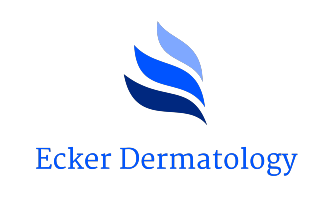Acne and rosacea are two of the most common conditions in dermatology. They can, at times, be disfiguring and leave permanent scarring. We have many effective medications to combat acne and rosacea. For comedonal acne (whiteheads and blackheads), one of the first line treatments is a retinoid. The over-the-counter versions of retinoids are often ineffective. There are several different strengths in several different vehicles (creams and gels mostly) that we can tailor to your skin and your condition's severity. Topical antibiotics and other topical medications (such as Aczone, a dapsone medication, Finacea, an azelaic acid, and several sulfa-containing lotions) can also be helpful. Newer treatments such as Soolantra (ivermectin) and Winlevi (clascoterone) can be helpful for the right patient. For the deeper, cystic acne, we often use oral antibiotics. Occasionally we will use anti-androgen medications such as spironolactone. For more resistant cases, Accutane (isotretinoin) is very useful, but the risks and benefits as well as your medical history must be weighed carefully before starting it. Lifestyle changes can also be an important part of treatment, and we will discuss this in detail with you as appropriate to your specific condition.
Psoriasis and eczema are two common chronic inflammatory conditions of the skin. While there is no cure for either condition, we have many medications and treatments that can control them remarkably well. For more mild cases, we often use topical corticosteroids. At times, Vtama (tapinarof), Protopic (tacrolimus), Elidel (pimecrolimus), Dovonex (calcipotriene), or Vectical (calcitriol), non-cortisone topical alternatives, will be appropriate. For more severe or refractory cases, phototherapy (narrowband UV-B light treatments) can be very effective. Systemic medications may be necessary. We have a lot of experience treating with the newer modalities such as the biologics (Enbrel, Humira, Taltz, Skyrizi, Tremfya, Ilumya, Xolair, Dupixent, among others) and the JAK inhibitors, as well as the older, more traditional therapies.
Although benign, these conditions are among the most concerning for patients. The dark, sometimes splotchy areas that sun damage leaves behind are unwelcome, particularly on the face. Sometimes hormones can play a role, but the sun nearly always plays a significant role. The first step is to use appropriate sun protection (broad spectrum UVA/UVB sunscreen) to protect from further damage. There are many approaches to treating these conditions, which include topical therapy, laser, cryotherapy (liquid nitrogen) and peels. A common and very effective approach is to do a series of peels, then follow up with maintenance topicals to maintain your good results. These topicals can be used by themselves as well, without peels, often with great results. Although the diagnosis and consultation for these conditions are covered by your insurance, some of the treatments are not covered. However, there are affordable options for any budget.
Warts and molluscum contagiousum are very common and can be difficult to eliminate. There are many treatment options for them, and most do require several visits. Cryotherapy in the office tend to be much more effective than over-the-counter "freezing" treatments. Candida (a yeast) antigen can be very effective against stubborn warts. Canthacur, a blister beetle "juice," is often used to supplement the scraping and cryotherapy technique, or can be used as a single treatment. Other modalities include hyfrecation (cautery), excision, curetting, and laser.
Moles can be difficult, even for the most seasoned dermatologist, to evaluate. We often employ a 7-point list in evaluating nevi (moles) with a dermatoscope or DermLite device. These devices help to visualize the nevus better, allowing a deeper look into the skin and seeing the pigment network and other features. You can help yourself by checking your skin once every other month or so, looking for the ABCDE's of melanoma (A- asymmetry, B- atypical borders, C- many colors within a lesion, D- diameter larger than a pencil eraser, E- evolution or changing over time) and returning to clinic with any worrisome lesions. We do many skin cancer screening exams to professionally evaluate your skin and moles at Ecker Dermatology.
Actinic keratoses are pre-cancers. They often feel like small hard bumps on the sun-exposed skin. Depending on the study, 3-5% of them can go on to become true skin cancers, and so treatment is recommended. We often use cryotherapy (liquid nitrogen) to destroy them. However, when you have many of them, further treatment may be recommended. There are topical medications available such as Efudex and Carac (topical 5-fluorouracil), but these can have significant downtime. There is a newer approach of using an accelerator to get through the 5-FU treatments more quickly and with less downtime.
Rashes can be some of the most perplexing and interesting conditions in dermatology. Some of them are easy to identify without further workup, including "textbook" tinea versicolor, granuloma annulare, and pityriasis rosea. Others require blood work, cultures, scrapings, and biopsies to come to a firm diagnosis. Some are caused by viruses, others by medications, and still others are inherent or acquired conditions.
There are thousands of dermatologic conditions, and Dr. Ecker and his team can help you identify and treat the disease or condition that you have. Whether you seek an initial diagnosis or continuation of a treatment plan for an existing condition, we can help.
